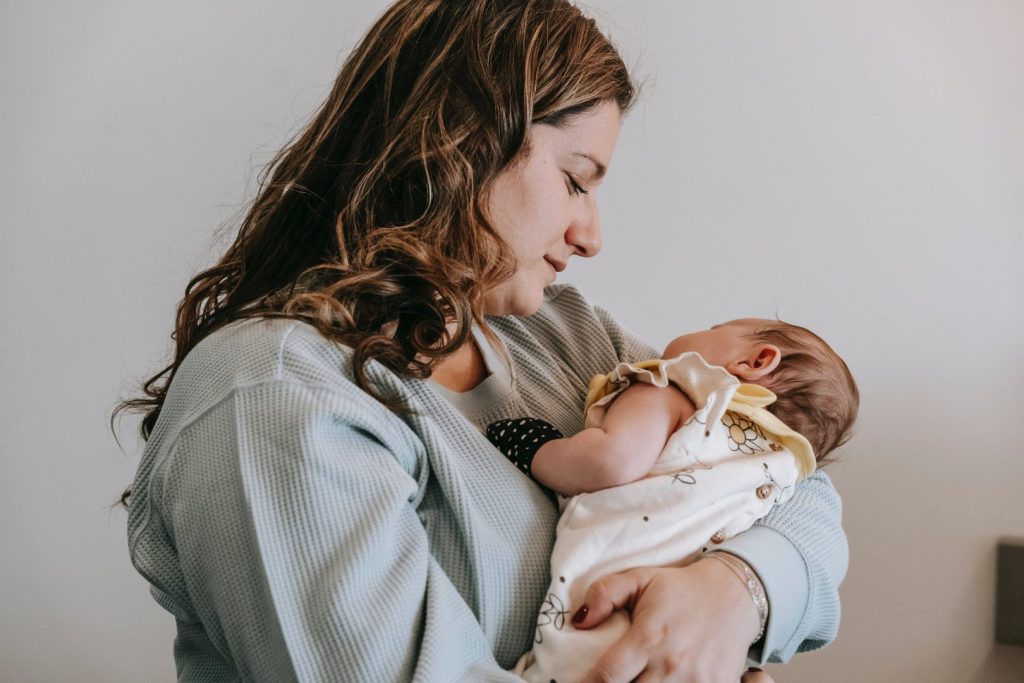You’ve probably wondered when the best time for babies to drop to one nap is. Well, the answer really lies in your baby’s development.
From the moment you come back from the hospital and enter your home carrying your baby, you start a new chapter in your life.
As your little pumpkin grows and the years pass, you’ll have to jump over many hurdles, some smaller and some bigger. Aligning your baby’s sleeping and eating patterns with your countless recommendations can be a tiring process.
But today, we’ll focus on parents’ best friend- naps, and more precisely on when your baby should drop to only one nap per day.
Importance of Napping for Babies
What’s even harder to control than a baby? A moody and tired one! When babies don’t get enough sleep, they feel stressed.

Some parents hope that avoiding naps during the day will give them more piece at night, but medical professionals go against that claim.
It’s best to let your little ones take a nap whenever they feel like it so that they’ll get the needed amount of energy for their favorite activities.
Whether it’s playing, jumping around, or causing havoc at home, babies need that daily energy boost that a nap gives them.
Moreover, you can also squeeze in some sleep together with your baby too! It’s really a win-win situation.
Baby Nap Schedule by Age
As your baby grows older, its nap schedule will change. The need and urge to sleep will slowly drift as your baby grows.
The bad thing is that your baby won’t get any calmer during this period. You might even consider giving birth to another baby because you’ll start missing those daily naps.
But at least you’ll get more sleep at night, that’s for sure. Nonetheless, here is the baby nap schedule for each age:
- Three months old- 3 to 4 naps per day with about 1 hour between them;
- Four months old- 2 to 3 naps per day with about 1.5 to 3 hours between them;
- Five months old- 2 to 3 naps per day with about 2.5 hours between them;
- Six months old- 2 to 3 naps per day with about 2.5 to 3 hours between them;
- Seven to eight months old- 2 naps per day with about 3 hours between them;
- Nine to twelve months old- 2 naps per day with about 3 to 4 fours between them;

At What Age Can Babies Drop to One Nap
So, we roughly covered the baby nap schedule by age, but we still haven’t answered the main question. Well, babies that are between one and one and a half years of age are ready to drop to one nap per day.
Remember that each baby is different and unique, so some babies can drop to one nap before or after that period.
Face it- you can’t rush time and force your baby’s sleeping routine. Sometimes it’s better to wait for your baby to lead you through the process.
We all know that whenever babies need something, they get it. So keep an eye on changes in your baby’s behavior, which hints that your little one only needs one nap daily.
· Signs That Your Baby is Ready to Drop to One Nap
As we mentioned, even though babies don’t usually like to talk, they still know how to express their wants and needs.
So, just like your baby signals that it is lunchtime, it can signal when it is time to drop to one nap daily.
Firstly, if your baby gets more than enough naptime during the day, it will refuse to fall asleep at night. So, you’ll have to sit there and tiredly entertain your little one.
Furthermore, your little one will start being less interested in taking daily naps and more interested in playing with its toys.

Or your baby can also start taking shorter naps than usual. That just means more playtime with mommy and daddy. Isn’t it great?
Lastly, you might experience some 3 AM wakings with your not-so-sleepy baby. And trust me, those are the best and worst nights of your life at the same time.
The Difference Between a Two-nap and One-nap Routine
As we mentioned, two to three naps a day are perfect for babies younger than one-year-old. But as your baby grows older and drops to one nap, routines change.
With two naps, your baby gets around 4-5 hours of sleep daily, split into two different times of the day (one in the morning, one in the afternoon).
On the other hand, with one nap, your baby gets around 3-4 hours of sleep daily. You should time that nap around 5 hours after your baby wakes up.
For example, if your baby wakes up around 8 AM and bedtime is around 8 PM, the single nap should be around 1 PM.
· Managing the Transition Between Multiple Naps and One Nap
Every parent knows that things don’t change overnight, especially when we’re talking about babies and naps.
So, transitioning between multiple naps and one nap can be quite an obstacle. Luckily, parents are programmed to pull through such times.

The first thing you can do is slowly move naps later in the day. But underline the word slowly! You can’t just snap your fingers and expect your baby to change immediately.
Babies are like royalty. They need an optimal environment to get their beauty sleep. So, preparing your little kings and queens for bed includes:
- Comfortable bedding;
- Warm clothes;
- Dimmed lights;
- No loud noises;
And if you think that it is impossible to get your baby to sleep, then you are wrong. You can do it in as much as 40 seconds!
Moreover, it’s crucial to keep your shape. Consistency is key to quality sleep, so avoid getting your baby to sleep at different times.
Lastly, never forget to overwhelm your little cutie with parental love. That includes a lot of hugs and kisses (and maybe some affectionate scratches along the way).
ALSO READ: When to Start Baby Sign Language







